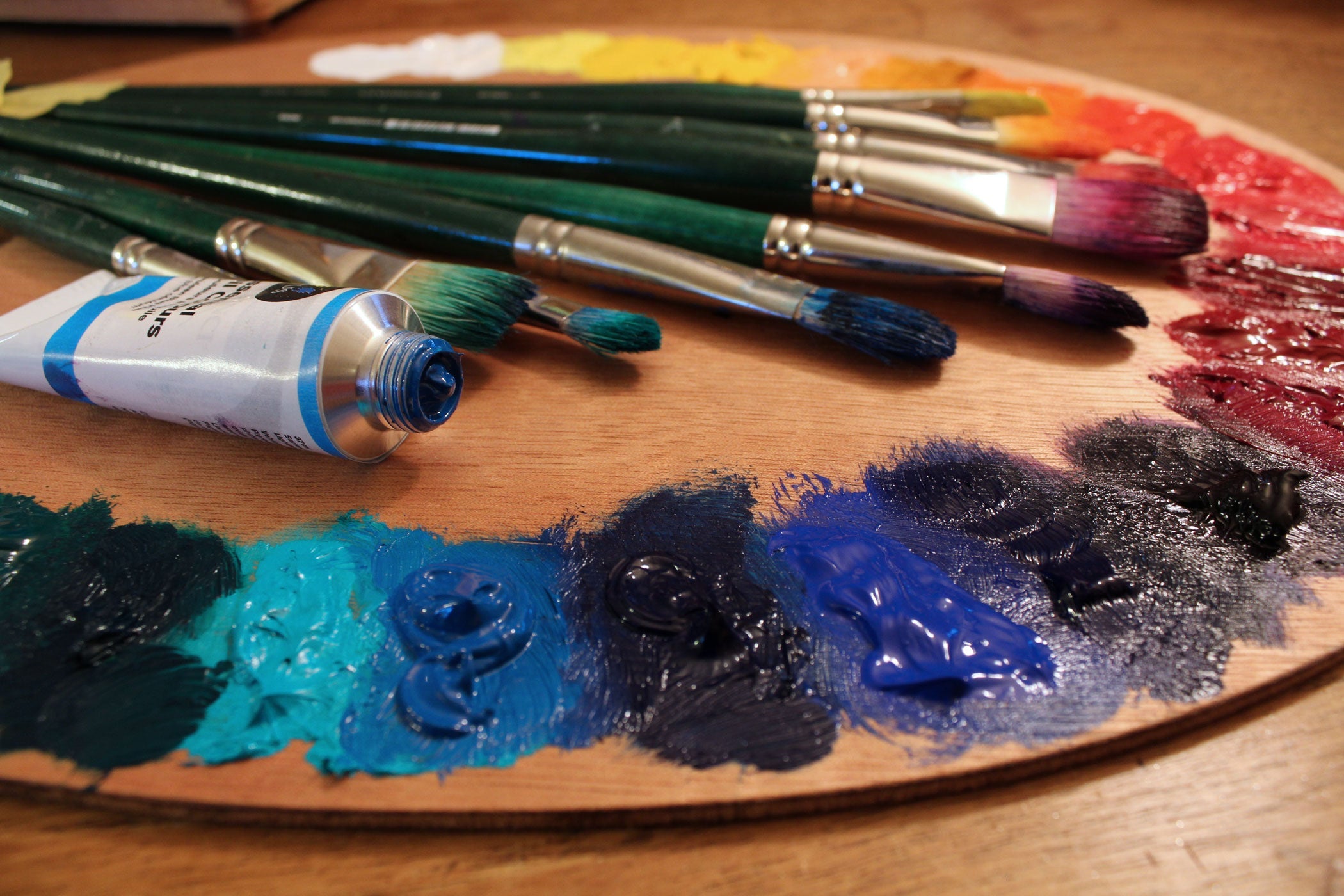Knowing Your Oil Paint Options
With so many oil paint options, it can be hard to know what the differences are. This oil paint overview takes some of the mystery out of choosing the right oil paint for your practice.

OIL PAINTS
Artist oil paints consist of pigment colours suspended in an oil binder – usually linseed or poppy seed oil. Whites are generally made with slower drying, poppy seed oil instead of linseed oil because poppy oil tends yellows less over time than other oils. Unlike acrylic paints, oil paints dry by oxidation instead of the evaporation of water. This means that oxidation chemically changes the paint’s composition by absorbing oxygen from the atmosphere.
Oxidation can cause problems as the paint dries, by cracking or wrinkling if the paint is too thick. Oxidation is a slow process and although the surface may look dry, the underlying layers may not be. It takes anywhere from 3 to 12 months for an oil painting to dry completely.
Oil paintings should not be varnished until they are completely dry otherwise the paint is susceptible to cracking and rippling. In a comparison of oil and acrylic colour, molecules of linseed oil are much smaller than acrylic polymers which enables oil paints to carry a heavier concentration of pigment. This results in a noticeable difference in appearance when the two paints dry.
Linseed oil is transparent, both when wet and when dry which means that the appearance of the colour when first applied will be the same as when it dries. Acrylic colour, on the other hand, appears lighter when wet because the polymer which carries the pigment is milky and translucent. When the paint dries the emulsion becomes clear and thus the pigment is darker.
Oil paints should be used in a well-ventilated area because of the thinners and mediums that are used in the process. In addition, artists should consider wearing latex gloves or other suitable hand protection, such as a barrier cream, to protect against the long term effects of working with pigments, thinners and solvents.
ARTIST & STUDENT GRADE OIL PAINTS
Oil paints are generally divided into artist and student grades, depending upon their content and pigment load.
Most artist grade oil paints consist of only pigment and linseed oil to ensure the purest colour possible. Although, some manufacturers will add stabilizers such as beeswax for a more “buttery” consistency. The proportion of pigment to oil varies depending upon the molecular size and properties of each pigment. Some pigment colours have small molecules which enable the oil to suspend a higher pigment load. Also, each pigment reacts differently with the oil and can dry to a more matte or glossy finish depending upon the amount of thinner or mediums used, and the type of painting ground they are applied to.
Student grade paints on the other hand, contain both pigment and linseed oil, and can contain various amounts of stabilizers, fillers or adulterants. Additives such as beeswax, and aluminum and zinc stearates, result in a more “buttery” consistency, whereas, alumina hydrate produces a very stiff or short paste. Additives are used by manufacturers to bulk up the paint and to alter the consistency of colours which might normally be quite stringy. The more additives used, the less true pigment an oil paint will tend to have.
Both artist and student grade oils use genuine and synthetic pigments. The primary difference is that the proportion of pigment is much smaller in student grade paints in the interest of economy for the student or beginner painter. In addition, some student paints will use synthetic hues of a particular pigment instead of the genuine pigment colour. With less pigment overall in student colours the bulk of the paint is made up of additives.
WHAT ARE WATER-MIXABLE OILS?
Water-mixable oil paints are a safer alternative to regular oil paints. They are genuine oil colour which can be thinned with water and/or specially formulated water mixable mediums. Clean-up of these paints simply requires soap and water rather than solvents, such as turpentine or mineral spirit which are normally used for clean-up in oil painting.
Made with modified linseed oil and safflower oil, water mixable oils will mix with water as opposed to repelling it, thus allowing for easy clean-up and mixing. These artist quality paints are made with a high pigment load to preserve the strength, brilliance and depth of oils. In addition, water mixable oil paints are certified nontoxic by the ACMI in the USA allowing this range of paints to be safely used by a wide variety of people. Note: colours which contain cadmium are toxic if they are airborne and are breathed in. As a result, they require care and should not be sprayed.
ARE DIFFERENT BRANDS OF OIL PAINT COMPATIBLE?
In general, different brands of oil paints are compatible with one another in terms of stability and permanence. Although, it is important to consider the differences in consistency between paints if you intend to mix them together. For example, some paints are oily while others might be more pasty, buttery or stringy. These differences will alter the drying properties of paint when mixed together. All other aspects of the paints being equal, a more oily paint will take longer to dry than a stiff paint. In addition, colour transparency and opacity (a little bit of colour theory) should be considered when mixing different oil paint brands. Like mixing colours within any brand of paint, you will find that some colours mix better together than others.
OIL PAINTING SURFACES
Common oil painting supports are canvas, hardboard or paper. Each of these supports should be properly primed with a size, oil-based ground or acrylic gesso before painting. It is not recommended to paint on raw canvas with oils as this will lead to the deterioration of the support if it is not properly sealed and primed. If using oils on pre-primed stretch canvases or pre-primed canvas off the roll, we recommend applying one or more additional coats of gesso to ensure that it is properly sealed.

